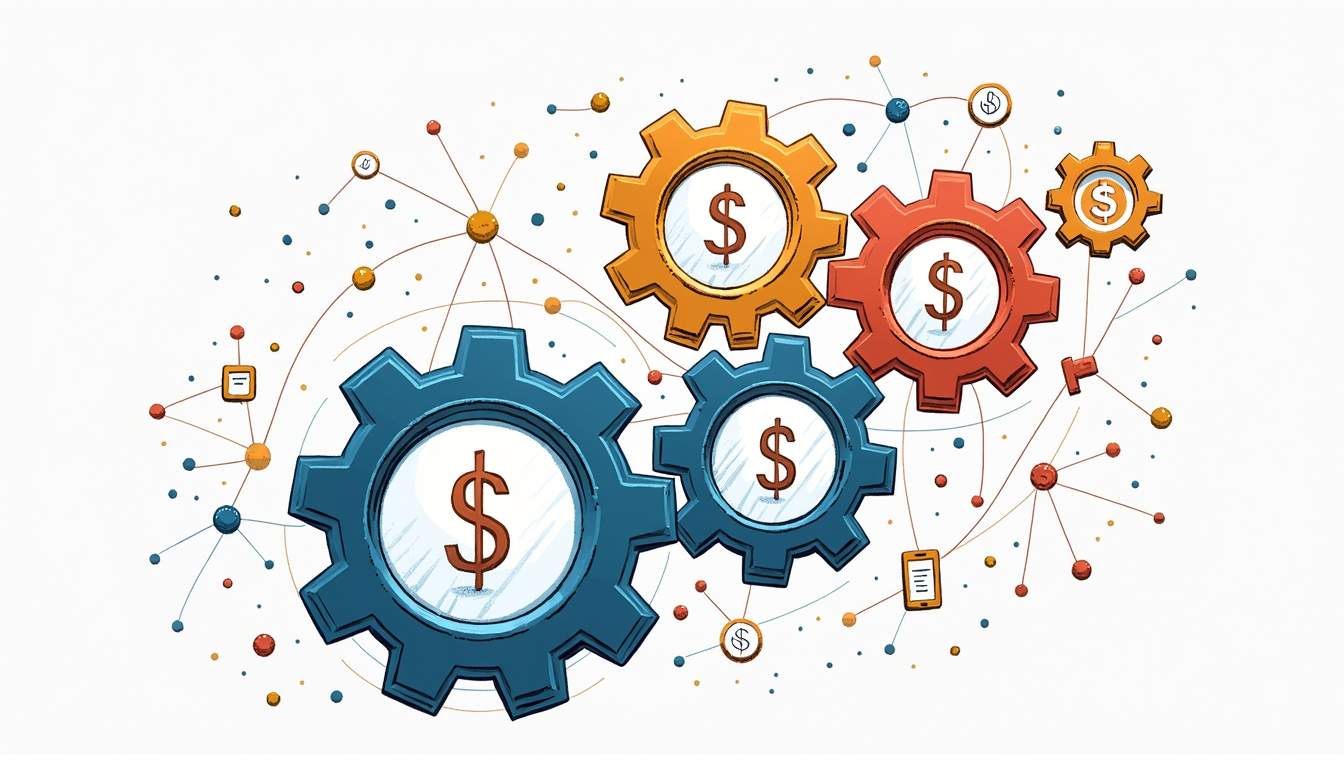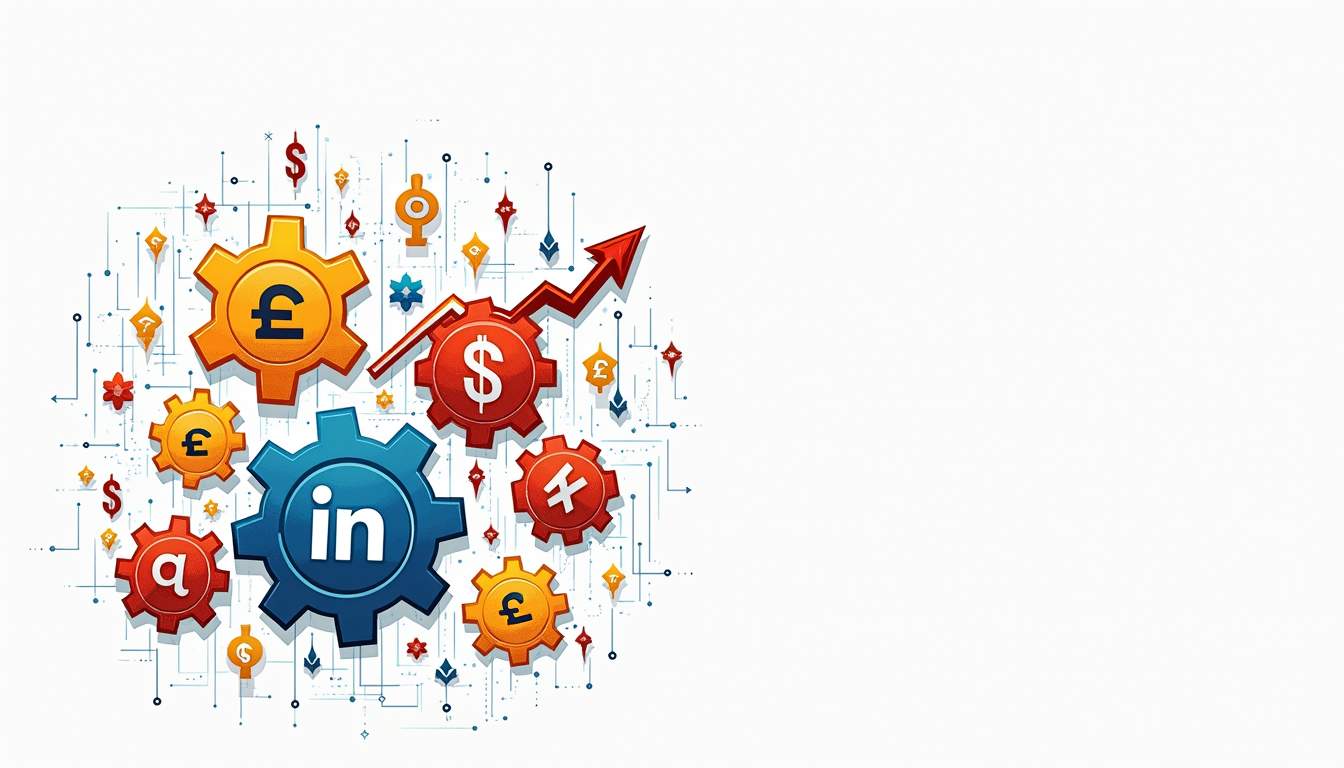Advertising on LinkedIn can be a critical component of your marketing strategy, especially for businesses in the B2B sector. The costs associated with this platform can vary widely based on several factors. In this article, we explore the intricacies of LinkedIn advertising costs, particularly for marketing automation tools.
Understanding LinkedIn Advertising Costs
To fully grasp how much advertising on LinkedIn will cost, it’s important to understand its pricing structure. LinkedIn employs a unique model that can differ from other social media platforms, leading to both advantages and costs.

Breakdown of LinkedIn’s Ad Pricing Structure
LinkedIn primarily uses a bidding system for ad placements. Advertisers can choose between three cost models: cost per click (CPC), cost per impression (CPM), and cost per send (CPS) for messaging ads.
The CPC model charges you when someone clicks on your ad, making it an attractive option for driving traffic. CPM, on the other hand, charges you based on every 1,000 impressions, suitable for branding campaigns. Lastly, the CPS model charges for direct messages sent to targeted users, adding a direct touch to your outreach.
In addition to these models, LinkedIn also offers various ad formats, including sponsored content, text ads, and dynamic ads, each with its own pricing nuances. Sponsored content, for instance, integrates seamlessly into users’ feeds, making it less intrusive and often leading to higher engagement rates. Understanding these formats can help you choose the best approach for your advertising goals and budget.
Factors Influencing the Cost of LinkedIn Ads
Several elements can affect LinkedIn ad costs, including competition, industry, and audience targeting. Higher competition in your sector can raise the cost per click, while a well-defined audience can enhance engagement and potentially lower costs. Understanding your target audience demographics and interests can help optimize spend.
Moreover, the creative quality and relevancy of your ads play a pivotal role. LinkedIn rewards highly relevant ads with lower costs per click. Thus, improving your ad quality can lead to a more efficient budget allocation. Additionally, factors such as the time of year and current events can influence ad costs. For example, during peak hiring seasons or industry conferences, competition may intensify, leading to increased costs. Keeping an eye on these trends can help you strategize your ad campaigns more effectively.
Another key factor is the geographic targeting of your ads. Ads aimed at users in high-demand markets or metropolitan areas may come with a higher price tag due to increased competition. Conversely, targeting niche markets or less saturated regions might yield more cost-effective results. By analyzing the performance of your ads across different locations, you can fine-tune your strategy to maximize your return on investment.
Advertising Marketing Automation Tools on LinkedIn
With numerous B2B marketing automation tools available, effectively advertising these products on LinkedIn is essential. LinkedIn offers a highly targeted environment for reaching decision-makers in various organizations.
Why Market Automation Tools on LinkedIn?
LinkedIn’s user base comprises primarily professionals, making it an ideal platform for marketing automation tools. Since these tools primarily serve businesses looking to improve operational efficiency and customer engagement, targeting the right audience can yield fruitful leads.
Furthermore, LinkedIn provides analytical tools that allow businesses to track the effectiveness of their campaigns, making data-driven decisions possible. This feature is crucial for marketers reliant on learning what resonates with their audience. The platform’s ability to segment audiences based on industry, job title, and company size enables marketers to create highly personalized campaigns that speak directly to the needs of their target demographics.
Additionally, the platform’s professional networking capabilities can foster relationships that lead to long-term partnerships. Engaging with potential clients through comments, shares, and direct messages can enhance brand visibility and trust, making it easier to convert leads into loyal customers.
Key Strategies for Advertising Automation Tools
When advertising marketing automation tools, employing tailored strategies is essential. Develop ad copy that speaks directly to the pain points of your target audience. Highlight features that differentiate your tool, such as user-friendliness or integration capabilities.
Utilizing visual elements, such as infographics or videos that showcase your tool’s functionalities, can capture attention better than text alone. A/B testing different ad formats can also provide insights into what resonates most effectively. Moreover, leveraging LinkedIn’s sponsored content and InMail campaigns can enhance reach and engagement, ensuring that your message lands directly in the inboxes of your ideal customers.
Incorporating testimonials and case studies from satisfied clients in your advertising can also build credibility and trust. Prospective customers are often influenced by the experiences of their peers, and showcasing real-world success stories can effectively illustrate the value of your automation tools. Furthermore, engaging in thought leadership by sharing relevant articles or insights related to marketing automation can position your brand as an authority in the field, attracting more attention to your products and services.
Budgeting for LinkedIn Advertising
Determining a budget for LinkedIn advertising is a crucial step in your marketing plan. An effective budget allows for strategic ad placements while maximizing reach without overspending.

Setting a Realistic Advertising Budget
When setting your budget, consider both your overall marketing goals and the specific goals for your LinkedIn campaigns. A common starting point is allocating around 10% to 20% of your overall marketing budget for LinkedIn.
Analyze historical data, if available, to project expected ROI. Consider seasonal trends that may influence spending, as demand for your product might fluctuate during certain times of the year. Additionally, it’s wise to keep an eye on industry benchmarks for LinkedIn advertising costs, as these can provide a clearer picture of what to expect. For instance, understanding the average cost-per-click (CPC) or cost-per-impression (CPM) in your sector can help you gauge whether your budget is competitive and sufficient to achieve your desired outcomes.
Maximizing ROI on LinkedIn Ads
Monitoring key performance indicators (KPIs) is crucial in maximizing your return on investment (ROI) for LinkedIn ads. Metrics such as click-through rates, conversion rates, and lead quality can provide insights into campaign performance.
Utilizing retargeting strategies to re-engage users who have interacted with your content can further enhance ROI by bringing back warm leads. Continuous optimization based on real-time data will likely lead to improved outcomes. Moreover, experimenting with different ad formats—such as sponsored content, message ads, or dynamic ads—can also yield insights into what resonates best with your target audience. A/B testing various headlines, visuals, and calls to action can help refine your approach and ensure that your advertising dollars are spent effectively, ultimately driving higher engagement and conversions.
LinkedIn Advertising vs Other Social Media Platforms
Understanding how advertising on LinkedIn compares to other social media platforms can guide your ad spend and strategy. Each platform has strengths in targeting and audience engagement.
Cost Comparison with Other Social Platforms
Generally, LinkedIn’s advertising costs can be higher than those of platforms like Facebook or Instagram. However, this cost reflects the quality of the audience you can reach, focused primarily on professionals and decision-makers in businesses.
For businesses targeting B2B customers, the investment can yield higher returns compared to advertising on more consumer-focused platforms. Effective cost management on LinkedIn can lead to more qualified leads and sales conversions.
Moreover, while the initial investment may seem daunting, it’s essential to consider the long-term benefits. LinkedIn’s audience is often further along in the buying cycle, meaning that the leads generated are not only more likely to convert but also tend to have a higher lifetime value. This aspect can significantly enhance the return on investment (ROI) for businesses willing to allocate a larger budget for their LinkedIn campaigns.
Effectiveness of LinkedIn Ads for B2B Marketing
LinkedIn is renowned for its efficacy in B2B marketing, often outperforming other platforms when it comes to generating leads. The ability to filter your audience based on job titles, industries, and company sizes adds significant value for businesses promoting automation tools.
Additionally, content marketing opportunities on LinkedIn, such as sponsored content or carousel ads, can effectively engage professionals, thereby enhancing overall campaign performance.
Furthermore, LinkedIn’s unique features, such as InMail and dynamic ads, provide businesses with innovative ways to reach their target audience. InMail allows for personalized messaging directly to users’ inboxes, which can lead to higher engagement rates compared to traditional ad formats. This direct approach is particularly useful for companies looking to establish relationships with potential clients or partners. As a result, leveraging these tools can help brands create more meaningful connections that go beyond mere clicks and impressions, fostering a deeper engagement with their audience.
Tips for Cost-Effective LinkedIn Advertising
Achieving successful LinkedIn advertising on a budget requires strategic planning and resourcefulness. Here are some actionable tips to enhance the effectiveness of your campaigns while keeping costs in check.

Optimizing Your LinkedIn Ad Campaign
Regularly reviewing and optimizing your ad campaigns is essential. Pay close attention to metrics and be prepared to adjust your budget or targeting as needed. Conducting split tests can also provide insights into which ads perform best.
Incorporating customer feedback can help to refine your messaging, making it more effective at engaging your audience. Fine-tuning your calls to action can also drive higher click-through rates.
Leveraging LinkedIn’s Targeting Features for Better ROI
LinkedIn’s advanced targeting features provide opportunities to reach specific audiences effectively. Utilizing options such as company size, employee skills, and job titles can help you hone in on your ideal customer.
Incorporating this level of specificity can drastically improve your ads’ performance and lead to a better ROI overall. By ensuring that your ads are seen by the right people, you can convert interest into actionable leads.